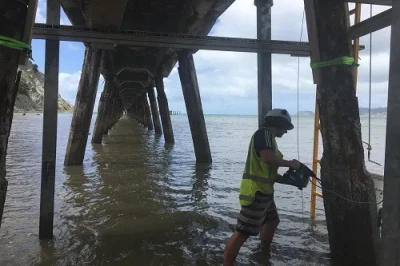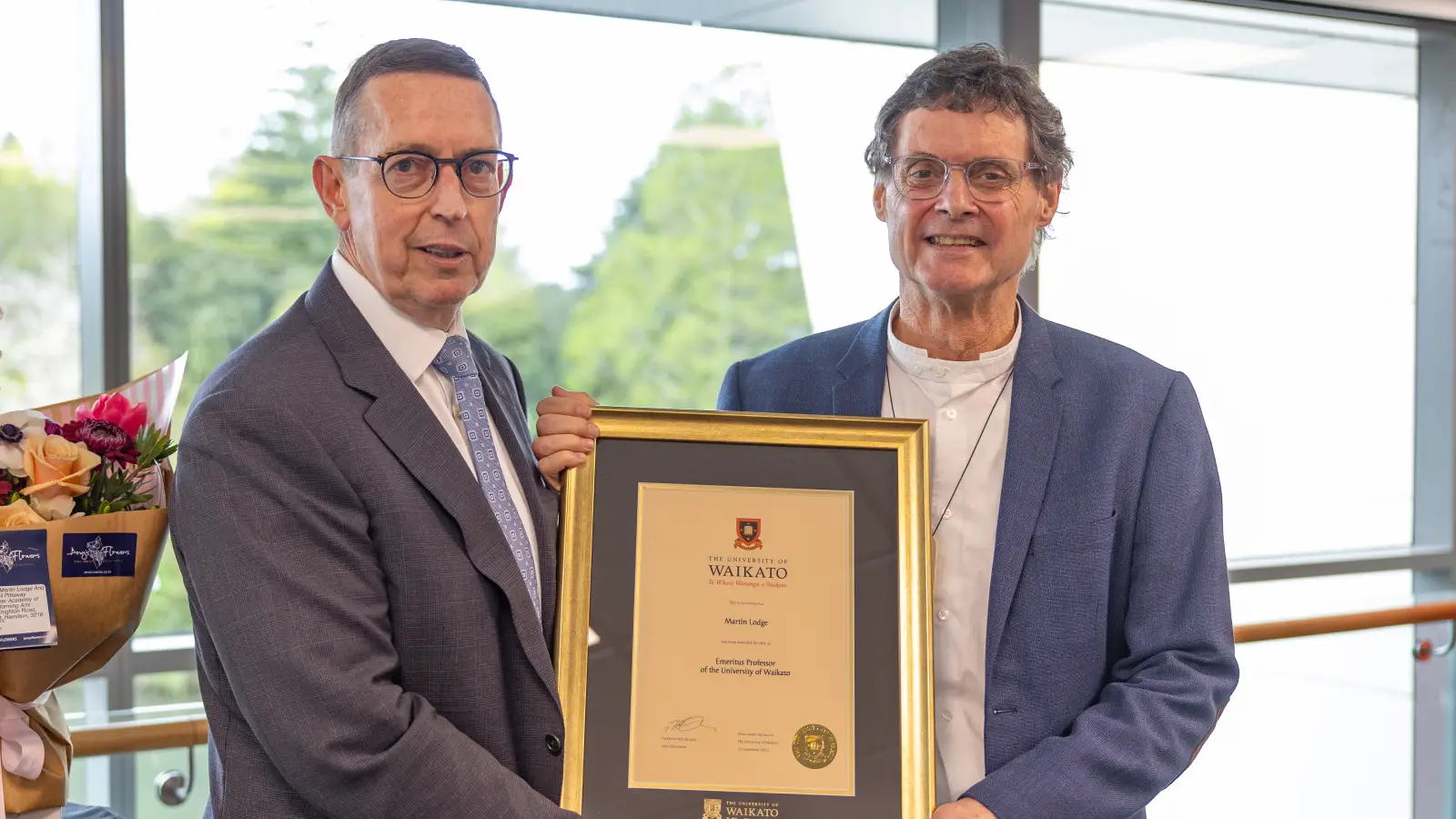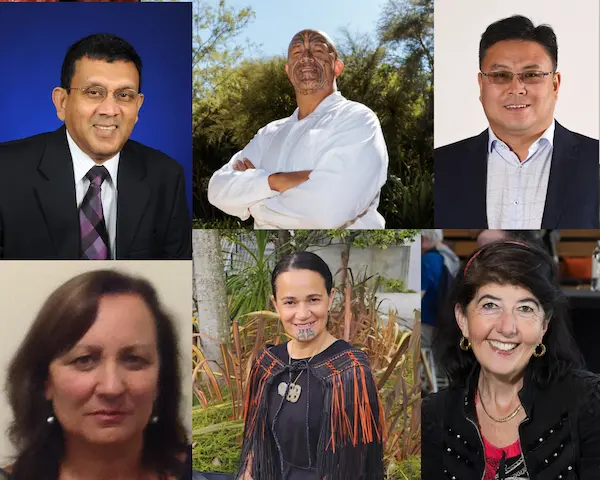Four test piles using a super strong concrete and novel fibreglass reinforcing, are being trialled this summer to replace the rotting ones currently under the wharf.
The project is part of a University of Waikato, Summer Research Scholarship being undertaken by Civil Engineering student, James Brott.

There are 80 piles in total along the now decaying wharf, which used to be a bustling economic centre for Tokomaru when the local freezing works processed mutton which was transported by sea in the 1940s and early 50s.
James says the pilot project will help the Tokomaru Bay Heritage Trust and Gisborne District Council determine the potential for a full restoration of the wharf which the Heritage Trust has been campaigning for.
“The trust had a design from local engineers for rebuilding the wharf, but they didn’t have sufficient technical detail. They also needed to be trialled to improve chances of more funding and our pilot project will help inform that,” says James.
Originally from Gisborne, James has been working under the supervision of Engineering School Dean, Professor Mark Dyer and expert Dr Ray Hudd.
“It’s been a great opportunity to learn on the job. My part has been focusing on the concrete we are using. It is newer technology. It is far stronger, self-compacting and it flows better into the piles.”
The piles are octagonal in shape and the construction method involves removing the decaying concrete from the outside of them. They then remove the steel reinforcing from inside them and replace it with fibreglass reinforcing, before wrapping the new concrete around the pile.
James says fiberglass reinforcing is novel, but fibreglass is just as strong as steel and it removes corrosion issues in the future. If successful it could provide a case for mainstream fibreglass use in bridge repair
Engineering School Dean, Professor Mark Dyer says he sees the wharf restoration as an opportunity for a wider interdisciplinary project for the School of Engineering that will be extended in 2021 to become one of the university’s major five-year research projects.
“Alongside James’ Summer Research Scholarship, focused on the wharf’s piles, we will extend the project to take into account the superstructure (deck), cover a component in using novel materials for design and construction and include further engagement with the community.”
Professor Dyer said they will also look at creating a renewable energy scheme for the area using existing streams and stabilising the cliffs around the area. Investigation of refurbishing the old freezing works headquarters was also a possibility.
“One of the challenges in New Zealand is the provinces and regions get overlooked by the big cities. Our coast and country have huge potential, so part of this project is also about looking at how we rejuvenate our regions and create livelihoods and livability.”
“The Tokomaru wharf revolutionised the local economy in its prime. It’s not doing that today, but there is an opportunity to create a focal point and an experience both visually and audibly at the site and improve livelihoods and livability in the surrounding community."



